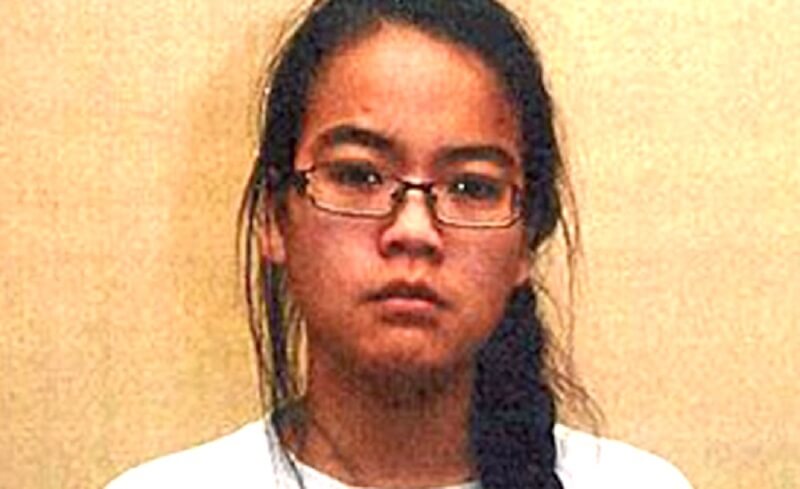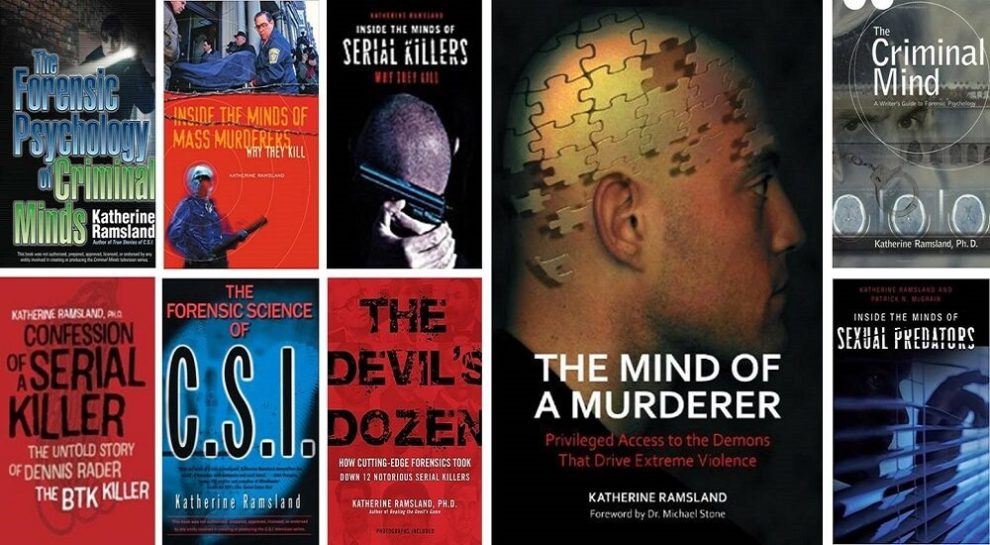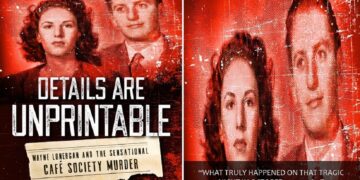Parricide is an act that causes horror when the lives of parents are taken, often brutally, by their own offspring. The Federal Bureau of Investigation suggests there are around 200 to 300 parricides carried out in the United States each and every year. That is up to 300 murders where the person responsible was not only known to their victim but was their own child.
Parricide is not a new phenomenon and history is full of cases from the Lizzie Borden case of 1872 which generated the famous rhyme “Lizzie Borden took an axe, and gave her mother forty whacks; when she saw what she had done, she gave her father forty-one,” to the more recent Menendez Brothers case in 1989 Beverly Hills who shot their parents dead in cold blood to access their money before claiming severe child abuse as their defense at trial.
Parricide is the term used to refer to the killing of one’s own parents. Within parricide, ‘patricide’ is used to refer to the killing of one’s father and, ‘matricide’ for the killing of one’s mother.
Parricide statistics around the world show varied incidence levels but highlight just how rare a crime it is. In Australia for example, between 2002-03 and 2011-12, there were 128 incidents of parricide recorded carried out by 132 offenders, working out at around 14 cases per year. Whereas in the United Kingdom, it is thought there are around 9 cases of parricide per year. In Canada, figures reported in 2015 indicated around 29 cases per year.
According to Dr. Kathleen M. Heide who specializes in juvenile violence and adolescent parricide offenders, most offenders are adults in that they are over the age of 18 years at the time of the murder. However, 1 in 5 parricides are carried out by offenders under the age of 18, with 30% of those under the age of 20 years old.
The cases which most commonly find themselves in the media spotlight, and therefore most familiar to the general public, are those carried out by children or adolescents, those carried out by females, or where there are multiple victims.
A recent case in Canada saw 24-year-old Jennifer Pan orchestrate a fatal attack on her parents in order to free her from what she perceived to be unfair treatment and restrictions. This was a shocking case that rocked Canada to the core. A young female who spent months planning a murder and a fake robbery in her home making her out to be a lucky surviving victim. Here there was no spontaneous act of violence, no mental illness to explain her actions. Simply a selfish cunning individual who would go to any lengths to achieve what she wanted.
This case is excellently presented and explored in a book by Jeremy Grimaldi called A Daughters Deadly Deception. His book not only tells the harrowing details of what happened but looks deeper into Jennifer Pan’s background, her upbringing, and her relationships as a young adult in order to try and discover why she took the actions that she did.

Adolescent Parricide
In her research, Dr. Heide has highlighted key differences between adolescents who commit parricide and adults. Adolescents have a higher risk of committing parricide when their home situation is problematic as they have nowhere to go. They cannot simply leave, they have nowhere to live, no money, and no finalized education to fall on to get a job and provide for themselves.
Furthermore, adolescents are still developing. They have less life experience and less understanding of their own emotions compared to adults to be able to deal with conditions that may be difficult. Adolescents are not going to think through their actions, their options, or really understand what avenues are available to them. They cannot weigh up decisions in the same way that adults can.
Adults should be, and usually are, more balanced and more developed both emotionally and cognitively. Adults can leave the home environment, set themselves up elsewhere, and if needs be, cut off all contact with parents. When adults do kill their parents there are often selfish motives behind the act such as financial gain or psychopathology may be involved or severe mental illness.
Typologies of Parricide Offenders
Dr. Heide has a typology of parricide offenders which she originally developed in 1992, published in her book ‘Why Kids Kill Parents: Child Abuse and Adolescent Homicide’. They are again published in her most recent book on the subject, ‘Understanding Parricide’, as these typologies have held up well as years have progressed and more knowledge has been gained about parricide and those who carry it out.
The Severely Abused Parricide Offender
This is the most common type of adolescent parricide offender, where there is generally long-standing abuse in the home. These offenders feel they are in danger, they are being threatened and they cannot see a way out and they kill in “response to terror or in desperation”. Often they have tried to get help in the past, maybe by telling another family member who does not live inside the home, but they have not been believed or no intervention has taken place to improve their situation.
They often kill as they can no longer deal with their situation. Psychological abuse can be present alongside physical, sexual or verbal abuse either directed at them or at someone else within the home which they witness. Generally, in these cases, there is no history of mental illness that has been diagnosed or is known to their family. However, there can be long-standing depression and possibly Post Traumatic Stress Disorder which is realized after the murder takes place.
The case of Stacy Lannert fits this profile, a young girl who suffered horrific abuse from her father took action when her father turned his sinister intentions to her younger sister. Stacy Lannert was 18 years old when she shot her father while he was sleeping on July 4, 1990, in Missouri. In 1992 at her trial, she was convicted of first-degree murder and given a life sentence. Both the abuse Stacy had suffered at the hands of her father and the resulting Post Traumatic Stress Disorder were presented at her trial by her defense team.
However, the prosecution’s argument that Stacy was not in immediate danger at the time of the shooting, as her father was asleep, and that she was not insane at the time of the murder, won over the jury. After serving 18 years in prison, Stacy Lannert’s sentence was commuted after a review of her case and she was released from prison in 2009. In 2011 she published a book about her life, experiences, and prison sentence, ‘Redemption: A Story of Sisterhood, Survival, and Finding Freedom Behind Bars’, and wants to help other victims of abuse within the home.
The Severely Mentally Ill Parricide Offender
Adult offenders are often diagnosed as severely mentally ill and in adolescent offenders, findings often indicate they were ‘gravely mentally disturbed’ at the time of the murder. Most often there is a diagnosed long-standing mental illness and the killing of a parent or both parents is directly related to the mental illness in these cases.
Offenders may have hallucinations, either visual or auditory where they are seeing things and/or hearing voices which are not there. These voices can be perceived as being a higher power, such as God, telling them to kill their parents. They are most often on psychotropic medication to control their condition and killings can take place when they stop taking this medication. When there are multiple victims or unusual weapons are used within murders, severe pathology at the time of the murder is more likely.
Sometimes mental illness has not already been identified in these offenders before the murder, but this is the conclusion after the incident with a belief the offender was severely mentally disturbed at the time of the murder. In these cases, the presence of such mental illness can block a prosecution for the crime if the offender is deemed not competent to stand trial. In this instance, an offender would usually be sent into psychiatric care and if they become competent through treatment of their condition a trial may take place at a later date.

There have been some cases that would fit into this category where there is no mental illness present, however, the offender has become entirely overwhelmed by their circumstances at the time of the murder. These circumstances are usually directly related to their parent or parents, for example, they may be caring for an elderly parent with dementia or a physical disability which they find very difficult. In these cases, it is most often concluded that the offender was in a state of extreme mental or emotional unbalance at the time of the murder.
The Dangerously Anti-Social Parricide Offender
This type can be found in both adolescent and adult offenders and they kill for primarily selfish reasons. The parents might be, in their eyes, ‘in the way’, stopping them doing what they want to do. It could be to get hold of their parents’ money or simply to have more freedom. These offenders usually have a long history of anti-social and criminal behavior. They may lack emotion or empathy for others showing psychopathic traits. These offenders know what they are doing and they are trying to gain something for themselves.
Alongside Jennifer Pan, Lyle and Erik Menendez are two brothers who fit this profile. In 1989 they shot and killed their parents, Jose and Kitty Menendez in a brutal and selfish act in order to obtain full access to their wealth. The Menendez brothers had a privileged childhood and grew up as spoiled children. They were lazy with no work ethic and simply wanted the good life without having to put any effort into it themselves.
Their father, however, was strict and had begun putting more restrictions on the boys due to their attitudes and behavior in an attempt to drill some discipline into them. In the months before the murders, Lyle and Erik Menendez began targeting and burglarizing the homes of their parent’s friends. Equally wealthy, this provided them with free access to cash and jewelry which they could sell quickly.
On 20 August 1989, the Menendez brothers shot their parents while they were watching television. They fired repeated shots to ensure maximum suffering and no chance of survival. They then called the police and claimed they had returned home to find the dreadful scene. In the weeks after the murders, despite acting the devastated children in front of police detectives, the brothers went on wild spending sprees using their parent’s cash in the full belief they would never be caught.
After confidently confessing to the murders to a therapist, believing therapist-patient confidentiality protected them, they were arrested and eventually found guilty of murder in 1996 and sentenced to life in prison with no chance of parole.
Common Characteristics of Parricide Offenders
The characteristics of sons and daughters who kill their parents have also been studied in a paper published in Current Psychiatry by Dr. Sara West and Dr. Mendel Feldsher, which provides a breakdown of the common characteristics found in adult offenders. In their analysis, they have broken down the most common characteristics in not only the crime itself but of the offenders and the victims.
The authors have used their own research and the leading research of other professionals in the field to provide these trends. It can be seen that of the cases studied, the majority of parricide offenders are male, and sons generally kill their fathers rather than their mothers.
Furthermore, while the majority of cases involved adult offenders, they were also able to provide some common characteristics which can be applied to juvenile offenders of parricide, that is offenders who were under the age of 18 years when they committed the crime. These characteristics include; that offenders are most often teenage boys with no history of psychosis, actions are often spontaneous and not pre-planned and can be motivated by long-term abuse by the parents. Furthermore, juvenile offenders often feel relief after the murder rather than remorse.
These categories, developed from years of case studies, are very useful but human behavior is complex and often cases do not fit neatly within the boundaries of one or the other. There can be a cross-over where offenders show signs of more than one category. According to Dr. Heide, “The critical consideration in deciding the parricide type is the motivation for the killing”.
References
- Cussen, T., and Bryant, W (2015) Domestic/Family Homicide in Australia. Australian Institute of Criminology, Research in Practice No. 38, pp21-40
- Gillis, W. (2015, Nov 28) Why does a son or daughter kill a parent? The Star.
- Grimaldi, J. (2016) A Daughters Deadly Deception: The Jennifer Pan Story. Dundurn Press. ISBN: 978-1459735248
- Heide, K.M. (2013) Understanding Parricide, Oxford University Press, ISBN: 978-0195176667
- Montaldo, C. (2016, Jan 13) The Case of Stacey Lannert. Crime.About.com
- Persaud, R. (1994, Aug 09) Deep mysteries of family cruelty: Unloved or spoilt brats: who can understand children who kill their parents? Raj Persaud on the most complex of crimes. The Independent.
- West and M. Feldsher, (2010) Parricide: Characteristics of sons and daughters who kill their parents, Journal of Current Psychology
Cite This Article
Guy, F. (2017, Feb 02) The Psychology of Parricide: When Children Kill Their Own Parents. Crime Traveller. Retrieved from https://www.crimetraveller.org/2017/02/parricide-psychology-when-children-kill-parents/
Related Books:
- Understanding Parricide: When Sons and Daughters Kill Parents – A comprehensive book about juveniles and adults who kill their parents including an in-depth discussion of issues related to prosecuting and defending parricide offenders.
- Murder in the Family: Inside Story of the Jersey Murders – When Elizabeth and Nicholas Newell were murdered their sons were implicated. This book follows the case and charts the difficulties faced by the police and the drama of the trial
- Why Kids Kill Parents: Child Abuse and Adolescent Homicide – A tragic portrait of adolescents who kill their parents who almost always kill out of desperation as they are almost always victims of child abuse, neglect, and dysfunctional parenting.









































This was a really interesting read, thanks for the information! I have recently read the Jennifer Pan book, really shocking. I can’t believe she wanted her parents dead just for more freedom. I think she must have been mentally ill in the background somewhere to have set this up. Did she really think she would get away with it? There was so many people involved, she must have known someone would talk or it would lead back to her.
Hi Valerie, I think Jennifer Pan was to fixated on the life she believed she would be able to lead after her parents death to think through her plan in terms of getting caught. She was wrapped up in her love for Daniel Wong, seeing little beyond the fantasy of them being together with no restrictions, despite the fact that Wong, to me, did not appear as keen on their relationship as she was.
Hi Fiona – nice article.
I did want to mention that I also assumed (as you did) that the Menendez brothers’ case was about greed. OTH, even kids who actively hate their parents don’t kill them so there must have been at least some level of parental neglect to have both boys feel so strongly that they wanted them dead, regardless of the reason. My own son looked at this case for a psyche class recently and came away convinced that they really were abused and that caused me to take another look.
I still don’t know what I think, but take a look at this: https://www.latimes.com/archives/la-xpm-1993-08-24-me-27341-story.html
This scenario – where the mother is on drugs to cope, very dominating and aggressive father – fits stories told by some of the people you quote above.
My point is just that it may be unfair to state with certainty that they were not abused. There were quite a few family members weighing in to say things were pretty awful at home, and this aunt said the boys thought they were written out of the will (sounds like Dad told them that). Anyway, I thought you might want to take another look.
BTW, I found your article after hearing from a friend of a friend of a friend who lives in McKinney, TX where a 15 yr old boy killed his mother (Stacy Barney). I’m very curious about the story – there are things being said (to friends of the family) which don’t make sense. Maybe you can interview him or write about that case…
Anyway – again, nice article.
Hi CJ, I’m glad you enjoyed the article! That’s really very interesting on the Menendez brothers’ case, I will definitely have another look and see what else is available. Thanks too on the McKinney, Texas case. That sounds like an interesting one, I’ll see what information I can find out! Thanks again!